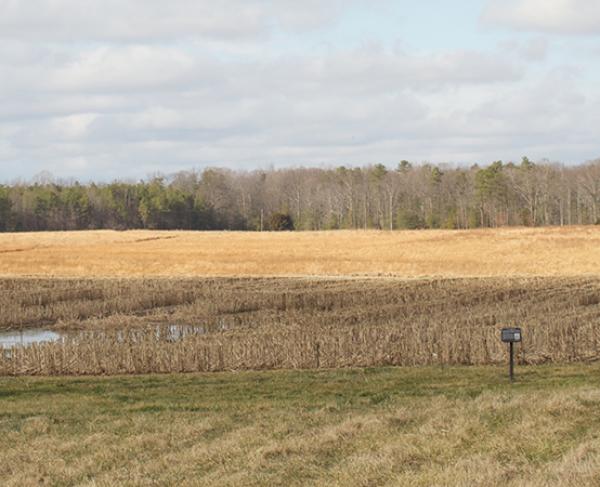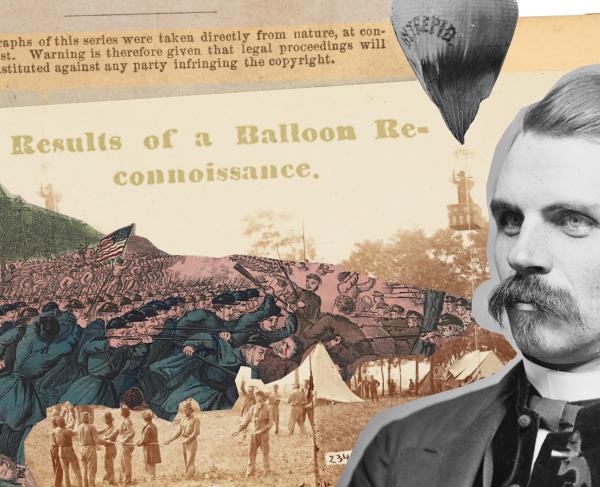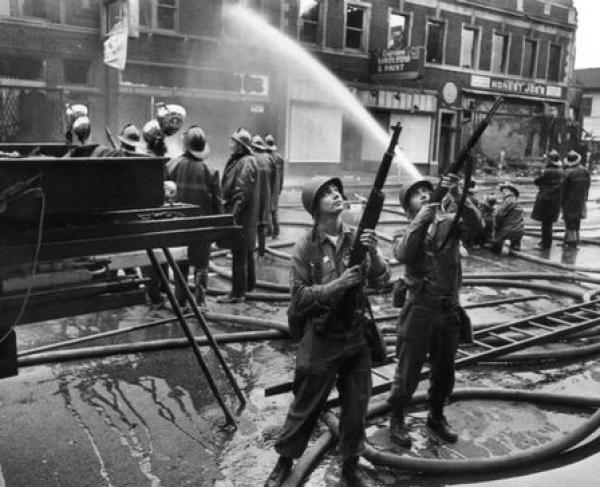Hallowed Air
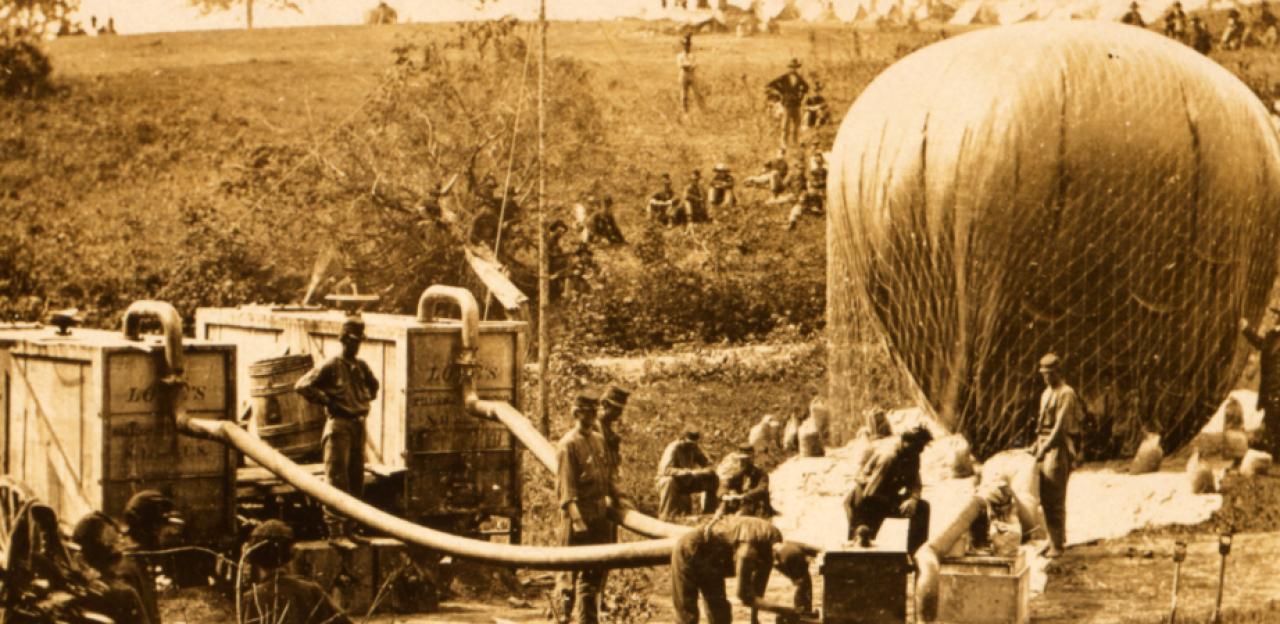
“One of the most remarkable occurrences of the army has this moment taken place. Park Spring, the telegraph operator, situated in Prof. Lowe’s balloon, at an elevation of one thousand feet….is freely and rapidly communicating with the Department at Washington. This is certainly an ingenious and valuable method of giving instantaneous information.”
New York Times, Near the Chickahominy, Thursday June 5, 1862
“Near [Gaines’] House is that modern invention in warfare, the balloon. Coming upon it suddenly, hidden in a little ravine, a globe, perhaps fifteen feet in diameter, attached to the earth by strong guys, and its beautiful colors sparking in the sun, we could be exclaim, “Big thing!” The rebels must be beaten, for they have no balloon.”
E.W. Locke
The American Battlefield Trust has a long and proud history of saving America’s Civil War battlefields — hallowed ground, we say. Internally we talk constantly about “dirt” and our almost religious connection to the fields and hills, rocks and streams where soldiers both North and South trod and fought. But with our new effort to save 285 acres of the Gaines’ Mill battlefield we also have a chance to save a place where the battle was waged a thousand feet above this hallowed ground. For not only is this new tract closely associated with the bloody assaults of June 27, 1862, but this land is also connected to the famous Union balloon camp that operated from this region during the Seven Days Campaign. Before Robert E. Lee’s Confederate soldiers stormed over this field, Thaddeus Lowe’s hydrogen-filled balloons soared high above it.
Most Americans, when we think of the beginnings of American air power, think of Kitty Hawk or Eugene Ely flying a plane off of the bow of USS Birmingham or maybe the early fighter pilots of World War I. And while 2009 marked the 100th anniversary of military aviation, 2011 will mark the 150th anniversary of the formation of Thaddeus Lowe’s Aeronautical Corp – our “first air force.” Reconnaissance balloons are to the Civil War what U-2s were to the Cold War.
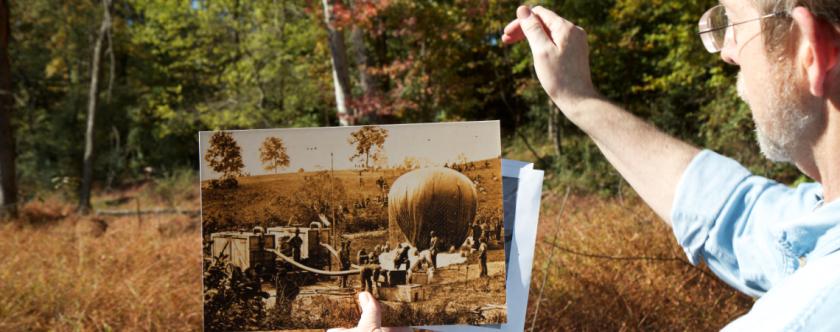
On Doctor Gaines’ farm, on the future Gaines’ Mill battlefield, Thaddeus Lowe established one of the most important ballooning operations of the Civil War. It was from this location that colorful Union balloons soared into the air looking to track the latest Confederate troop movements or to direct nearby artillery fire. It was here that many of the most famous photographs of Civil War balloons were taken. But where was here exactly?
During the April 2011 Civil War Ballooning symposium held at the National Air & Space Museum in Washington, DC, I had the chance to hear from all of the great Civil War ballooning experts. During those presentations there was a detailed discussion of ballooning operations during the Peninsula Campaign, the true apogee of Civil War ballooning, and the locations from where they operated. As maps and satellite images poured up onto the IMAX-sized screen I quickly recognized that the Gaines’ Farm location was suspiciously close to a tract of land at Gaines’ Mill that I knew we were close to acquiring. Could it be? Could we actually be buying a battlefield that not only had tremendous combat history, but was also the preeminent Civil War ballooning site in America? After the lectures were over I raced down to the speakers to introduce myself.
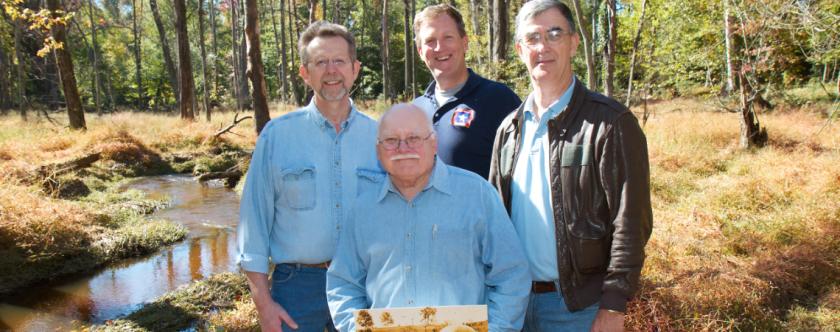
Fast forward five months, I found myself, with video camera in hand, walking with those very experts towards Powhite Creek, one of the streams which borders our new 285-acre “Longstreet Attacks” tract at Gaines’ Mill. Dr. Tom Crouch, chief curator of aeronautics at the National Air & Space Museum, Dr. Jim Green from NASA, and Mike Boehme, who runs the nearby Virginia Aviation Museum – all the great Civil War ballooning historians – were walking down the cow-pie filled field, where Dr. Gaines’ prominent home was located. Just ahead was the tree-choked slope leading down to Powhite Creek – an important source of water for Lowe’s sophisticated hydrogen production wagons.
On the day of the Battle of Gaines’ Mill, Alabamians from Wilcox’s Brigade surged over Dr. Gaines’ property and into this very stream bed. Wilcox later reported to his superior, James Longstreet, that his men had passed to the left of the “Gaines’ house by the Federal gas works.” Those “gas works” were Lowe’s prized hydrogen generation wagons. Now captured by the Confederates, at least one of the wagons was taken to Richmond and displayed as a war prize. Interesting enough, the only significant artifact ever to be recovered at the Gaines' Mill battlefield is a large bronze fitting used by Lowe's hydrogen wagons to cool the hot gas before it entered the balloons. Finding that they couldn't bring everything with them during their hurried escape over the Chickahominy River, Lowe's men buried the large brass fitting, knowing that its sophisticated function was a secret best kept out of Confederate hands.
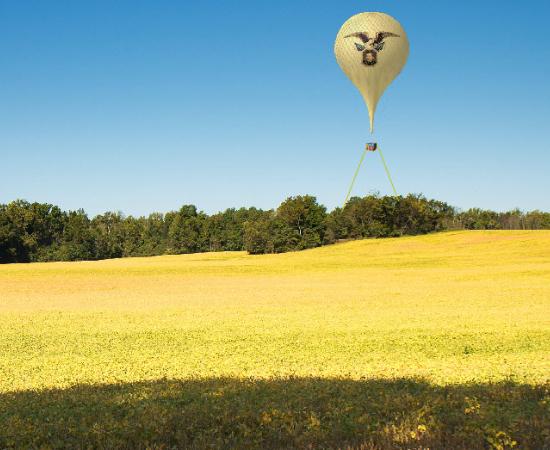
Armed with binders of primary source material and large blowups of the two most famous balloon photos from this site, we proceeded to cross muddy streams and climb over fallen logs. Down into this protected hollow – a wide region bordered by steep sides that would have protected the balloons on the ground – we pondered the landscape and attempted to line up the photos. Processing the landscape all around them, the three historians came to the conclusion that we, standing along the muddy banks of the Powhite, were positioned roughly where Lowe conducted his ballooning operations in the summer of 1862. Flicking a few spiders off of my backpack I pulled out the satellite images of this region and drew my finger to this spot on the map. Bingo. Lowe’s famous ballooning camp at Gaines’ Mill and our new target tract were joined at the northwestern boundary. So in addition to saving the Confederate right flank of the Gaines’ Mill battlefield, we were now also in position to save a portion of maybe the most famous Civil War ballooning site in America.
So as you contemplate the opportunity to save a remarkable piece of the Gaines’ Mill battlefield, I do hope that you will also consider the “hallowed air” above it. This Gaines’ Mill tract may be the first three-dimensional battlefield that the American Battlefield Trust and its many supporters will have had the honor to save and preserve for posterity.
There are 29 critical acres of battlefield land in Virginia, at Glendale, and at Gaines’ Mill/Cold Harbor that we have the opportunity to save in...
Related Battles
6,800
8,700
